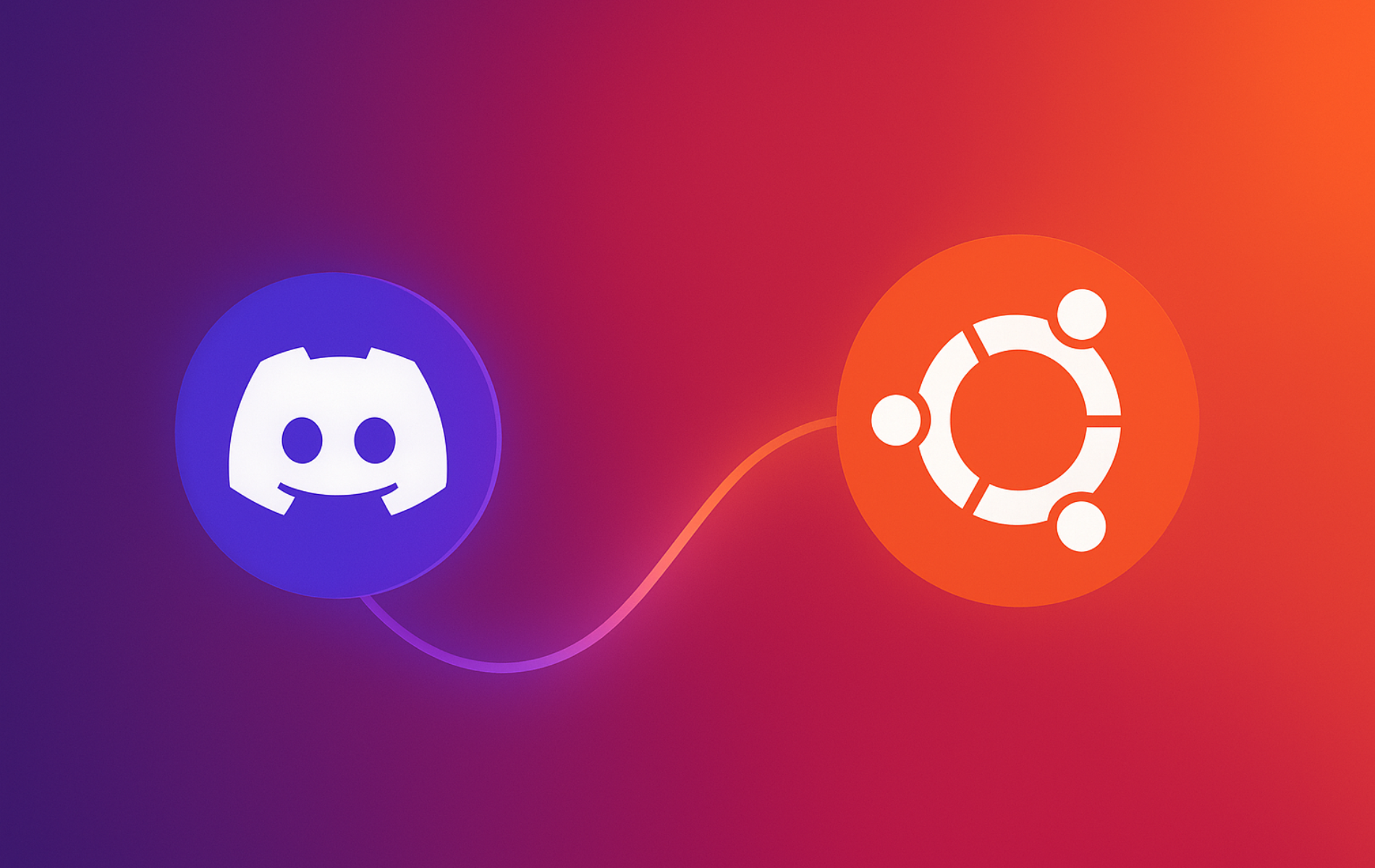Discord is a communication platform for creating communities with voice, video, and text chat. Used by gamers, developers, and online groups, Discord offers screen sharing, custom emojis, moderation tools, and cross-platform support including Linux.
This guide covers three Ubuntu installation methods: the official .deb package for system-level installation, Snap for automatic updates in a sandboxed environment, or Flatpak with Flathub for another sandboxed option. Throughout this guide, you’ll learn installation procedures, update workflows, and removal steps for each method.
Choose Your Discord Installation Method
Discord offers three installation paths on Ubuntu, each with different update mechanisms and isolation levels. Before proceeding, choose the method that best fits your workflow and system preferences.
| Method | Update Mechanism | Isolation | Best For |
|---|---|---|---|
| .deb Package | Manual reinstall required | System-level install | Official package, direct from Discord |
| Snap | Automatic background updates | Sandboxed environment | Hands-off updates, universal compatibility |
| Flatpak | Manual update command | Sandboxed environment | Flathub ecosystem, granular permissions |
The .deb method provides the official Discord package but requires manual updates. In contrast, Snap and Flatpak offer sandboxed installations with automatic or simpler update workflows, though Snap provides the most hands-off experience.
Method 1: Install Discord via .deb
This method installs Discord as a system-level Debian package downloaded directly from Discord’s official website. Specifically, you’ll download the .deb file using wget and install it with APT.
Download the Discord .deb for Ubuntu
To begin, with the terminal open, enter the following command to download the latest version of Discord as a Debian package:
wget "https://discord.com/api/download?platform=linux&format=deb" -O discord.debThis command uses wget to download the Discord Debian package from the official Discord API. Additionally, the -O discord.deb flag specifies the output filename.
Install Discord via .deb package
After the download completes, proceed to install the Discord Debian package:
sudo apt install ./discord.deb -yThis command installs the downloaded discord.deb file, while the -y flag skips confirmation prompts.
Method 2: Install Discord via Snap
Alternatively, Snap provides Discord in a sandboxed environment with automatic background updates. Since Ubuntu ships with Snap pre-installed, this becomes the quickest installation method.
Install Discord using the snap command
To get started, install Discord with a single command:
sudo snap install discordThis command downloads and installs Discord from the Snap Store. Furthermore, updates happen automatically in the background.
Method 3: Install Discord via Flatpak and Flathub
As another option, Flatpak provides a sandboxed application environment, allowing Discord to run isolated from system libraries. However, this method requires adding the Flathub repository before installation.
If Flatpak is missing from your system, follow the How to Install Flatpak on Ubuntu guide before proceeding with the Discord steps.
Add the Flathub Repository for Discord
Before installing Discord via Flatpak, add the Flathub repository:
sudo flatpak remote-add --if-not-exists flathub https://flathub.org/repo/flathub.flatpakrepoThis command adds Flathub to your system, which enables access to Discord and thousands of other applications.
Install Discord via Flatpak Command
After Flathub is added, you can proceed to install Discord:
flatpak install flathub com.discordapp.Discord -yThis command installs Discord from Flathub, while the -y flag skips confirmation prompts.
Launch Discord via GUI or CLI
CLI Methods to Launch Discord
After installation, launch Discord from the terminal using the command that matches your installation method:
For .deb installations, use:
discordAlternatively, for Flatpak installations, run:
flatpak run com.discordapp.DiscordSimilarly, for Snap installations, execute:
snap run discordGUI Method to Launch Discord
Alternatively, for everyday use, launch Discord from your desktop environment:
- First, open the Activities menu.
- Next, click on Show Applications.
- Finally, locate and click on the Discord icon.


Update and Remove Discord
Update Discord
Discord handles in-client updates automatically for most features. However, binary package upgrades require manual intervention depending on your installation method.
.deb Discord Update Method
For .deb installations, Discord will notify you when a new version is available. Consequently, to update, re-download and reinstall the package:
wget "https://discord.com/api/download?platform=linux&format=deb" -O discord.deb
sudo apt install ./discord.deb -yFlatpak Discord Update Method
Similarly, to update Discord installed via Flatpak, run the following command:
flatpak updateSnap Discord Update Method
Alternatively, for Discord installed using Snap, use this command:
sudo snap refreshRemove Discord
If you need to remove Discord from your Ubuntu system, use the command that matches your installation method.
.deb Discord Remove Method
For .deb installations, use the following command:
sudo apt remove discordFlatpak Discord Remove Method
Alternatively, for Flatpak installations, execute:
flatpak uninstall --delete-data com.discordapp.Discord -ySnap Discord Remove Method
Similarly, for Snap installations, run:
sudo snap remove --purge discordConclusion
Discord installs on Ubuntu through three distinct methods: the official .deb package for system-level access with manual updates, Snap for automatic background updates in a sandboxed environment, or Flatpak for controlled updates with Flathub integration. Furthermore, each method delivers the full Discord experience with voice, video, and text communication, though they differ in update workflows and isolation levels. Ultimately, your Ubuntu system now runs Discord with the installation method that best matches your maintenance preferences and security requirements.


Thank you so much for this excellent guide. It’s one of the best-structured, most understandable, and most comprehensive guides I’ve ever read. Awesome work. Best regards and many thanks to the authors, you did a great job!